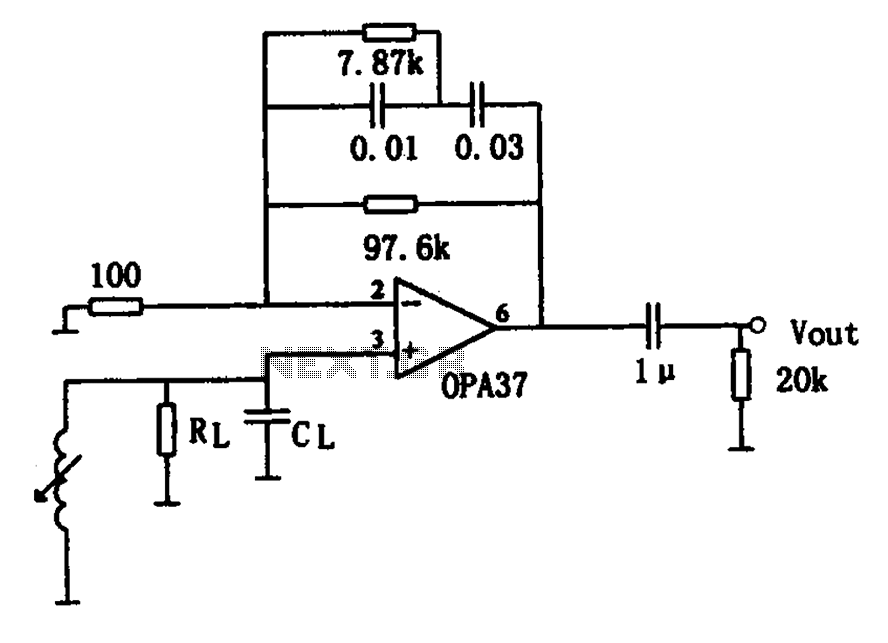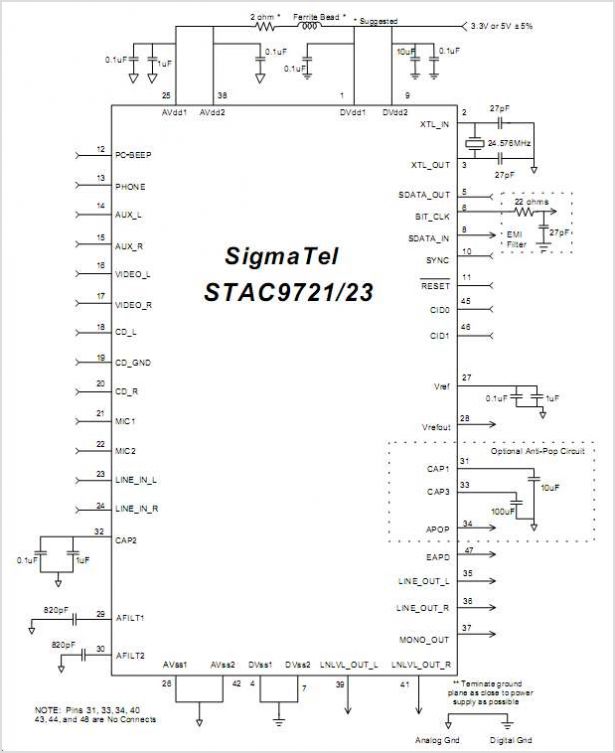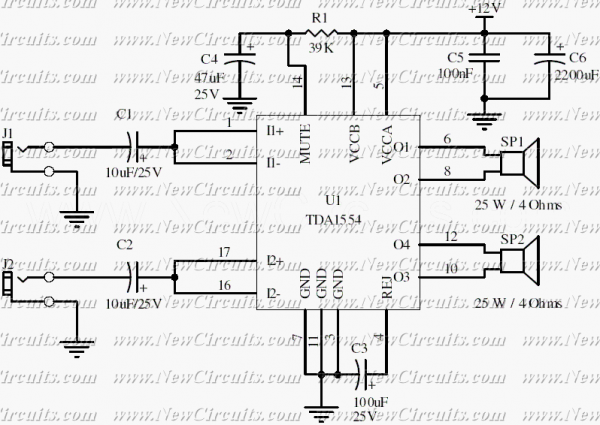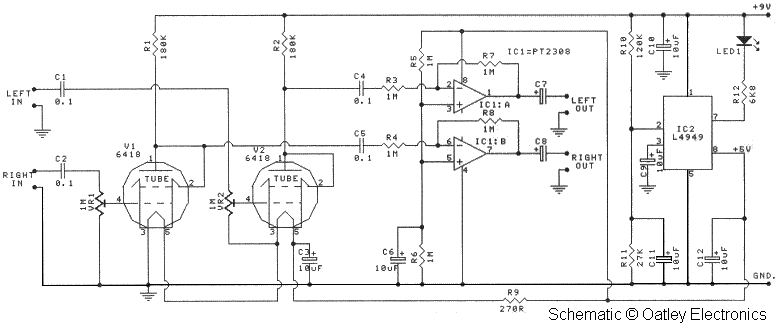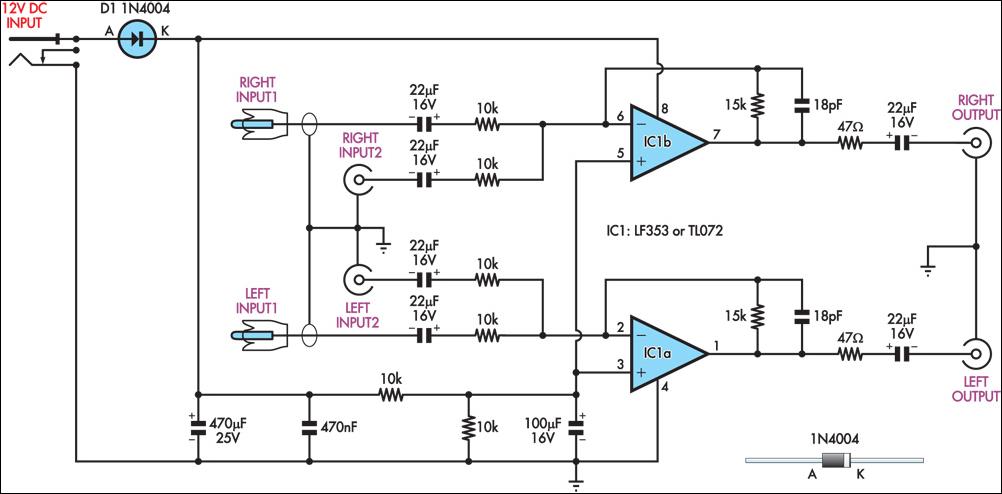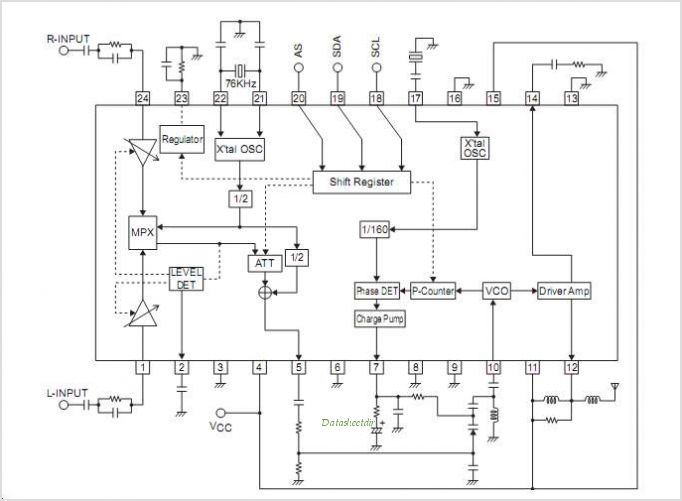
Stereo Preamplifier with balance and loudness
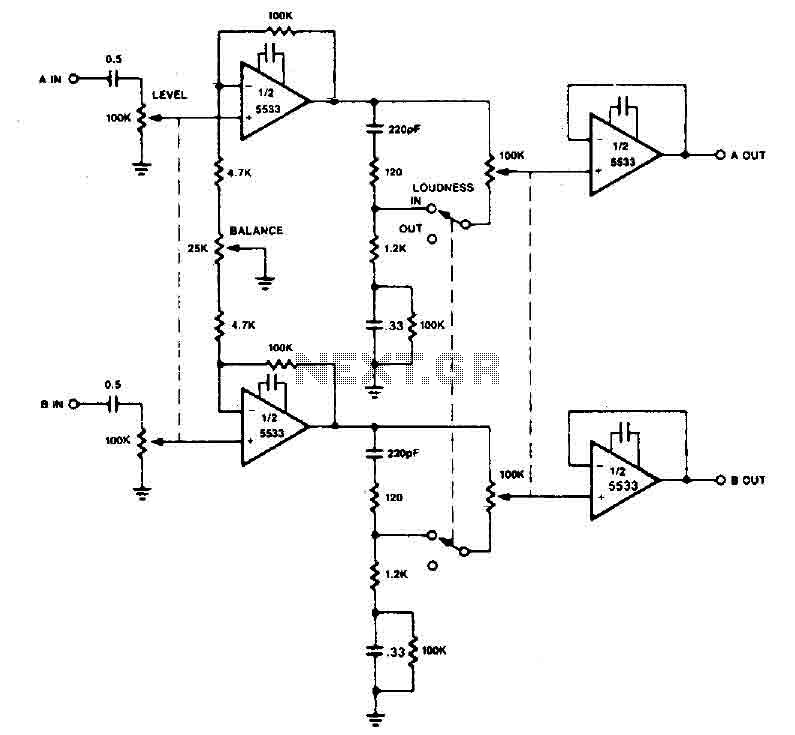
The preamplifier circuit utilizes the 5533 chip and incorporates a combination of balance and volume controls. Given the nonlinearity of the human auditory system, low frequencies are required to be amplified at lower listening levels. Additionally, level and LOUDNESS controls allow for adjustments to achieve the desired sound response from the audio source.
The preamplifier circuit based on the 5533 operational amplifier is designed to enhance audio signals while providing user-friendly controls for balance and volume. The 5533 chip is known for its low noise and high performance, making it suitable for high-fidelity audio applications.
The circuit includes a balance control that allows the user to adjust the relative levels of the left and right audio channels, ensuring a well-centered soundstage. The volume control adjusts the overall output level of the audio signal, providing flexibility in listening levels.
To address the nonlinearity of human hearing, particularly at lower volumes, the circuit incorporates low-frequency boosting. This is critical as human ears are less sensitive to low frequencies at lower sound levels. The design may include a low-frequency equalization stage that selectively amplifies bass frequencies, ensuring that the audio remains rich and full even at reduced volumes.
Furthermore, the inclusion of level and LOUDNESS controls enhances the user experience by allowing for fine-tuning of the audio output. The level control adjusts the gain of the audio signal, while the LOUDNESS control typically employs a specific equalization curve to boost low frequencies and sometimes even high frequencies, compensating for the perceived drop in sound quality at lower volumes.
In summary, this preamplifier circuit design effectively combines advanced audio processing capabilities with intuitive user controls to deliver a high-quality listening experience, ensuring that audio playback is optimized for various listening environments and preferences.The circuit of preamplifier use the 5533 chip and features a combination of controls balance and volume. Due to the nonlinearity of the human auditory system, low frequencies must be boosted at low listening levels.
Level pay, and LOUDNESS controls provide all the plays to produce the desired response from the music. 🔗 External reference
The preamplifier circuit based on the 5533 operational amplifier is designed to enhance audio signals while providing user-friendly controls for balance and volume. The 5533 chip is known for its low noise and high performance, making it suitable for high-fidelity audio applications.
The circuit includes a balance control that allows the user to adjust the relative levels of the left and right audio channels, ensuring a well-centered soundstage. The volume control adjusts the overall output level of the audio signal, providing flexibility in listening levels.
To address the nonlinearity of human hearing, particularly at lower volumes, the circuit incorporates low-frequency boosting. This is critical as human ears are less sensitive to low frequencies at lower sound levels. The design may include a low-frequency equalization stage that selectively amplifies bass frequencies, ensuring that the audio remains rich and full even at reduced volumes.
Furthermore, the inclusion of level and LOUDNESS controls enhances the user experience by allowing for fine-tuning of the audio output. The level control adjusts the gain of the audio signal, while the LOUDNESS control typically employs a specific equalization curve to boost low frequencies and sometimes even high frequencies, compensating for the perceived drop in sound quality at lower volumes.
In summary, this preamplifier circuit design effectively combines advanced audio processing capabilities with intuitive user controls to deliver a high-quality listening experience, ensuring that audio playback is optimized for various listening environments and preferences.The circuit of preamplifier use the 5533 chip and features a combination of controls balance and volume. Due to the nonlinearity of the human auditory system, low frequencies must be boosted at low listening levels.
Level pay, and LOUDNESS controls provide all the plays to produce the desired response from the music. 🔗 External reference
